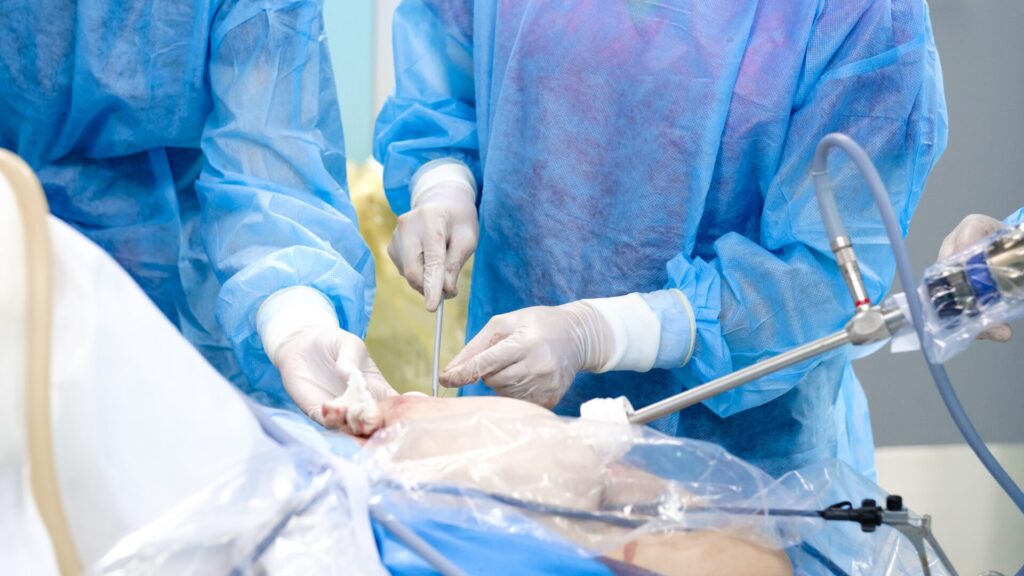Reasons for Getting Dallas Robotic Spine Surgery

Image sourced from Canva
Dallas Robotic spine surgery sounds like an operation nobody wants, but it’s a life-saving procedure nevertheless. It can be helpful for people with chronic back pains and other similar medical conditions that cannot be solved by holistic and therapeutic treatments.
What Is Robotic Spine Surgery?
Robotic spine surgery is an invasive procedure that combines anatomy and technology – or more specifically, X-ray imaging, to separate the muscles around the spine.
Considered an innovation in surgical procedures, minimally invasive robot spine surgery was developed in 2004, yet gained prominence only seven years later. Although robotics is still relatively young compared to other technologies in the medical field, there seems to be a potential for robotic spine surgery to increase accuracy, reduce costs, and enhance the patient’s safety during operation.
Because it is minimally invasive, there is a small chance of bleeding, retraction, infection, and pain for the patient. On the flip side, robotics also minimizes human error and speeds up the entire procedure. For instance, radiation time for robotic spine surgery takes only over 15 seconds, while the radiation time for freehand, traditional surgery goes beyond 30 seconds. Because radiation time is comparatively shorter, the spine robotic surgery system is generally safer for patients.
In addition, robotic surgery uses pedicle screws to help stabilize the spine and assist with spinal fusion. According to initial experiments and medical reports, robotic spine surgery demonstrates an accuracy that is much better than that of freehand screw placement.
History of Robotic Spine Surgery
Minimally invasive surgery was first conceptualized in 1987. A great effort in the medical community was made to expand this concept and experiment on ways to make MIS an efficient and safe operation. This included working towards fewer chances of infections, reduced length of hospital admission, and reduced duration of patient convalescence. Admittedly, there was a learning curve for both surgeons and their surgical teams.
Years after, even entrepreneurs teamed up with the medical community to design robots for the operation. Problems in precision were first addressed, and now robotic spine surgery companies and clinics have sprung up all over the United States to make spine surgery more convenient, cost-effective, and painless to patients.
Who Needs Robotic Spine Surgery?
Robotic spine surgery is helpful after complex revision surgery, or after the spine was distorted due to accidents and injuries. The shape of the spine could be predicted and through robotic spine surgery, the needed correction can be obtained. Robotic spine surgery is beneficial when implants have to be applied to the spine, or when parts of the bone have to be removed from the spine.
Other conditions that need this kind of surgery are:
- scoliosis
- hunched back
- herniated disks
- degenerative disk disease
- spinal tumors
- osteoporosis compression fracture
- spine injuries
- sacroiliac joint dysfunction
- spondylolisthesis
- spinal deformities
Many patients assume that it is the Globus spine surgery robot that’s doing the surgery. On the contrary, it’s still the surgeon overseeing the procedure, and through the robot he is able to make precise and efficient movements.
Where Can This Surgery Be Performed?
The surgery can be done in a hospital operating room, or in a clinic such as the Minimally Invasive Neurosurgery of Texas.
How Can Patients Benefit from Robotic Spine Surgery?
Through Dallas robotic spine surgery, implant accuracy is improved, and fluoroscopy is reduced. There is also a decrease in re-operations, complications, and use of opioids.
But despite the safety of this new technology, several risks have also been identified, such as unexpected blood loss during the operation, blood clots after the surgery, localized infection, complications from anesthesia, and a small percent of probability that the surgery will not be completed due to the need for an open surgical procedure.
Is Robotic Spine Surgery Expensive?
Robotic spine surgery costs cheaper compared to open surgery, in the sense that patients get to save a portion of the annual fees that could have included the total hospital admission bills. Since robotic spine injury is minimally invasive, it will not take so much time to perform it, thus reducing the hours spent in the operating room and in the hospital.
Why Choose Us?
At the Minimally Invasive Neurosurgery of Texas, Dr. Scott Kutz will explain and perform the treatment of various spinal disorders, which includes but is not limited to herniated disks, spinal tumors, and spinal stenosis.
Dr. Kutz is a board-certified neurosurgeon specializing in the treatment of spinal disorders through minimally invasive procedures. Aside from robotic spine surgery, he also performs minimally invasive spine fusion in Dallas and minimally invasive decompression in Dallas and ensures that his patients get all the pre-operation and post-operation care that they deserve.
Our clinic combines the latest technology and personalized caring attention to help you recover faster without you breaking the bank. If you have a degenerative disk disease, contact our clinic at (972) 244-3491 to book an appointment. The clinic is open from Mondays to Fridays, from 8 AM to 5 PM.
Don’t let spinal disorders ruin your life. Instead of spending a lot in hospitals, visit the Minimally Invasive Nuerosurgery of Texas clinic so you can get diagnosed and treated. Book an appointment with Dr. Kutz now and see how effective and efficient Dallas robotic spine surgery is!
